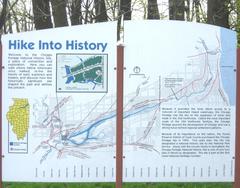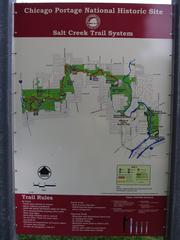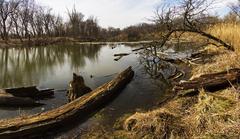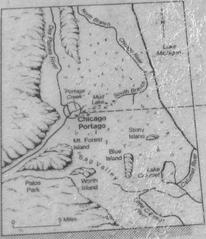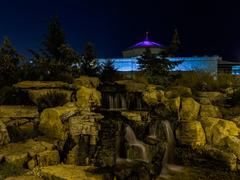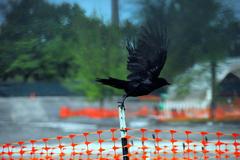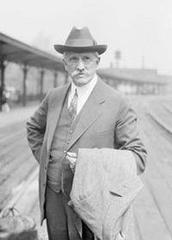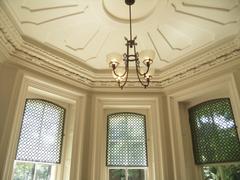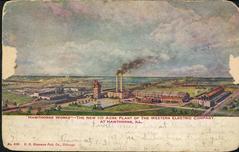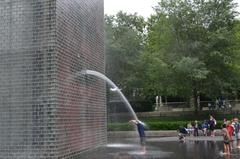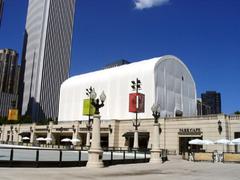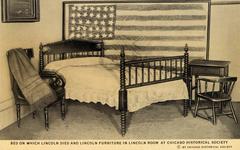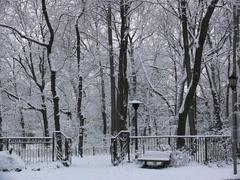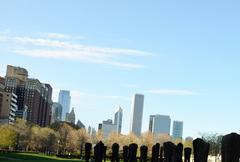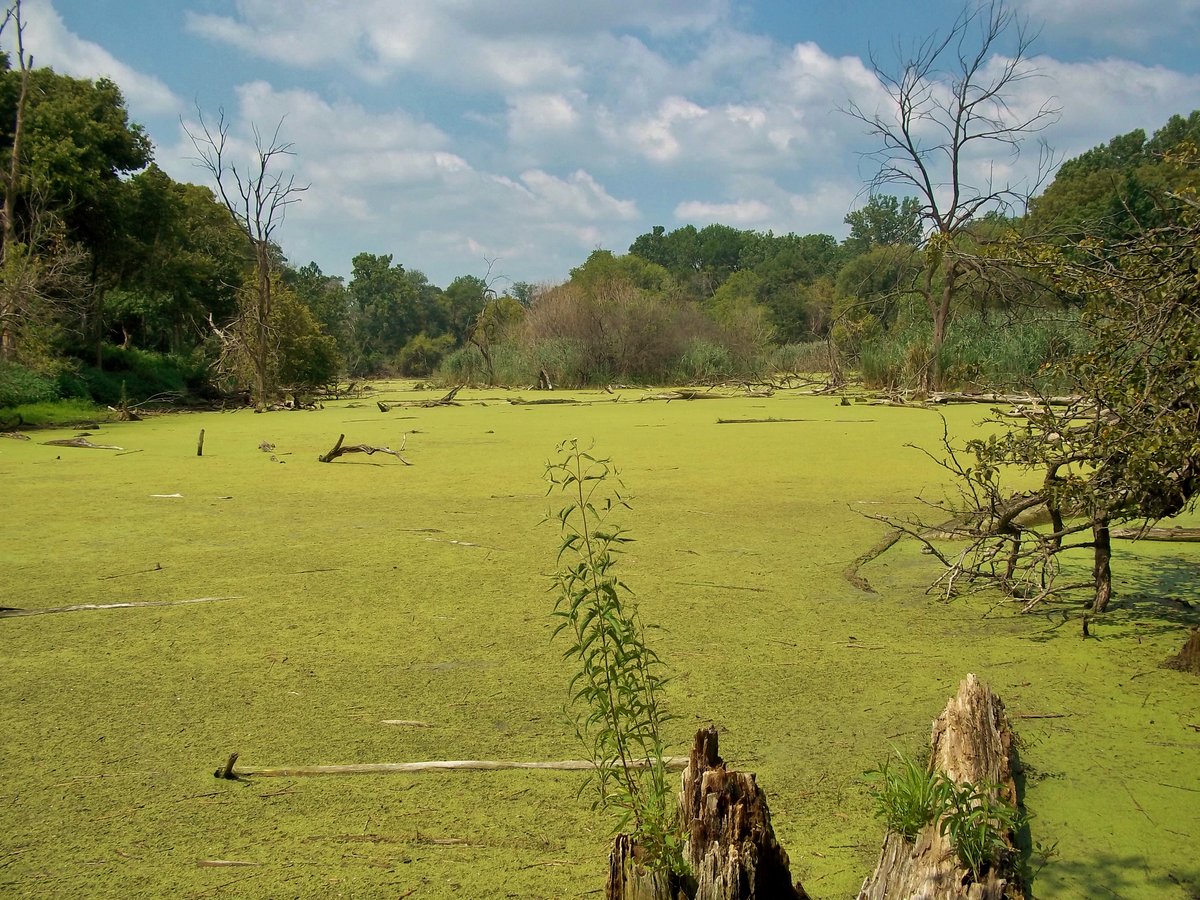
Marquette and Joliet Explorer Statue Visiting Guide, Chicago
Published Date: 01/08/2024
Introduction to Marquette and Joliet Explorer Statue
The Marquette and Joliet Explorer Statue is a prominent landmark in Chicago, celebrating the pioneering spirit of French-Canadian explorer Louis Jolliet and Jesuit missionary Father Jacques Marquette. These explorers embarked on a groundbreaking expedition in 1673, marking the first European exploration of the upper Mississippi River and paving the way for the future development of North America. The statue commemorates their significant contributions and serves as a focal point for those interested in the rich historical tapestry of the region. Located at the intersection of Marshall Boulevard and 24th Street, the statue is accessible year-round and offers visitors a unique opportunity to delve into the historical and cultural significance of the Chicago Portage, a crucial link between the Great Lakes and the Mississippi River (Shaw Local, MapQuest). This comprehensive guide will provide you with all the essential information, from historical context and visiting tips to nearby attractions and preservation efforts, ensuring a memorable and educational experience.
Contents Overview
- Introduction
- Historical Background
- Early Exploration and Significance
- The Chicago Portage
- Father Jacques Marquette
- Louis Jolliet
- Visiting the Marquette and Joliet Explorer Statue
- Location and Opening Hours
- Tickets and Admission
- Nearby Attractions
- Memorials and Monuments
- Marquette’s Final Journey
- Preservation Efforts
- FAQs
- Conclusion
Historical Background
Early Exploration and Significance
In 1673, French-Canadian explorer Louis Jolliet and Jesuit missionary Father Jacques Marquette embarked on a significant expedition to explore the Mississippi Valley. Their journey marked the first European exploration of the upper Mississippi River, a venture that would have profound implications for the future of North America. The duo’s exploration was pivotal in recognizing the strategic importance of the portage near Chicago, which served as a critical link between the Great Lakes and the Mississippi River (Shaw Local).
The Chicago Portage
The Chicago Portage, a nine-mile stretch of swampy land, was the only barrier separating the Great Lakes from the Mississippi River system. This portage was identified by Jolliet as a potential site for a canal that could connect the two major water systems, thereby facilitating trade and travel across the continent. This idea was later realized with the construction of the Illinois and Michigan Canal in 1848, which linked the Chicago River to the Illinois River (MapQuest).
Father Jacques Marquette
Father Jacques Marquette was born in Laon, France, on June 1, 1637. He joined the Society of Jesus at the age of 17 and was later assigned as a missionary to the indigenous peoples of the Americas. Marquette had a remarkable talent for learning native languages, becoming fluent in six Native American dialects and an expert in the Huron/Wyandot language. His missionary work took him across present-day Michigan, Wisconsin, and Illinois, where he founded several missions that eventually grew into significant settlements (Saving Places).
Louis Jolliet
Louis Jolliet, born in Quebec in 1645, was a French-Canadian explorer known for his expeditions in North America. He was a skilled cartographer and fur trader, which made him an ideal partner for Marquette on their 1673 expedition. Jolliet’s recognition of the Chicago Portage’s strategic value was instrumental in the later development of the region as a major trade hub (Shaw Local).
Visiting the Marquette and Joliet Explorer Statue
Location and Opening Hours
The Marquette and Joliet Explorer Statue is located at the corner of Marshall Boulevard and 24th Street in Chicago. The statue is accessible to the public year-round, with no specific visiting hours, allowing visitors to explore the site at their convenience.
Tickets and Admission
There is no admission fee to visit the Marquette and Joliet Explorer Statue. The site is open to all visitors, making it an excellent addition to any itinerary exploring Chicago’s historical sites.
Nearby Attractions
While visiting the Marquette and Joliet Explorer Statue, consider exploring other nearby historical sites such as the Chicago Portage National Historic Site in Lyons, Illinois. This site features a 20-foot statue commemorating Marquette, Jolliet, and their Native American guides, and visitors can follow the portage trail used by the explorers along a sandy ridge in Ottawa Trail Woods (MapQuest).
Memorials and Monuments
Several memorials and monuments have been erected to honor Marquette and Jolliet’s contributions. Notable among these is the Marquette Building in Chicago, built in 1895, which features mosaics, sculptures, and bronze work that pay homage to Marquette’s expeditions. The building is listed as a Chicago Landmark, a National Historic Landmark, and a National Register building (Saving Places).
Marquette’s Final Journey
Marquette’s health deteriorated during his missionary work, and he eventually succumbed to illness on May 18, 1675, near present-day Ludington, Michigan. Despite his untimely death, Marquette’s legacy lived on through the numerous communities and landmarks named in his honor. His contributions to the exploration and mapping of North America remain a significant part of the region’s history (WBEZ).
Preservation Efforts
Efforts to preserve the memory of Marquette and Jolliet’s explorations have been ongoing. In 1907, a mahogany cross was erected near the south branch of the Chicago River to commemorate Marquette’s stay in the area. Additionally, a bronze tablet was installed on the northern bridge tower of the Damen Avenue Bridge in 1930. These memorials serve as a testament to the enduring impact of Marquette and Jolliet’s explorations on the development of Chicago and the surrounding region (Shaw Local).
FAQs
What are the visiting hours for the Marquette and Joliet Explorer Statue? The statue is accessible year-round with no specific visiting hours.
Do I need to buy tickets to visit the Marquette and Joliet Explorer Statue? No, there is no admission fee to visit the statue.
What other historical sites are nearby? Consider visiting the Chicago Portage National Historic Site in Lyons, Illinois, and the Marquette Building in downtown Chicago.
Conclusion
The Marquette and Joliet Explorer Statue and the various memorials dedicated to these explorers highlight their significant contributions to the exploration and development of North America. Their recognition of the strategic importance of the Chicago Portage paved the way for the region’s growth as a major trade hub. Visitors to these sites can gain a deeper understanding of the historical context and the lasting legacy of Marquette and Jolliet’s explorations. For more information and updates, follow us on social media and download our mobile app for a comprehensive guide to Chicago’s historical sites.
Sources and Further Reading
- Shaw Local, 2016, Author source url
- MapQuest, Year, Author source url
- Forest Preserves of Cook County, Year, Author source url
- Saving Places, Year, Author source url

